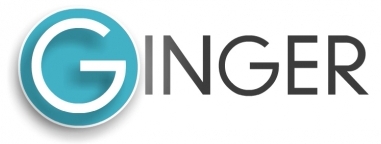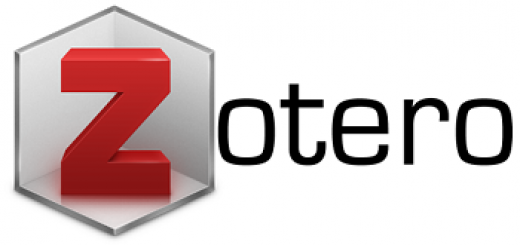BREAKING ROMANCE CONVENTIONS: HERO/HEROINE DYNAMICS IN ROWELL’S ELEANOR & PARK
Abstract
Keywords
Full Text:
PDFReferences
Abrams, M. H. (1999). A glossary of literary terms (7th ed.). Heinle & Heinle Pub.
Bansal, A.B. (2020). The role of new criticism in literary criticism. JETIR: Journal of Emerging Technologies and Innovative Research, 7(2).
Carter, D. R. (2006). Literary theory. No Exit Press.
Cawelti, J. G. (1972). The concept of formula in the study of popular literature. The Bulletin of Midwest Modern Language Association, 5, 115. https://doi.org/10.2307/1314918
Cawelti, J. G. (1976). Adventure, mystery and romance: Formula stories as art and popular culture. University of Chicago Press. https://dx.doi.org/10.7208/chicago/9780226148700.001.0001
Gray, P. (2000, March 20). Publishing: Passion on the page. https://content.time.com/time/subscriber/article/0,33009,996381,00.html
Hayati, K. R., & Emeraldien, F. Z. (2019). Janice Rodway’s ideal romance in hero (Chirstian Grey) and heroine (Anastasia Steel): An analysis of Fifty Shades of Grey by E.L James. Tell: Teaching of English Language and Literature Journal, 7(1), 1–10. doi:10.30651/tell.v7i1.2653
Holman, C. H. (1980). A handbook to literature: Based on the original edition by William Flint Thrall and Addison Hibbard. Bobbs-Merill Education Pub.
Ilief-Martinescu, A. (2016). Postfeminist fiction in chick lit novels. Gender Studies, 14(1), 119-137). https://doi.org/10.1515/genst-2016-0008
Intan, T. (2020). Romance formula in ‘Perfect Romance’ by Indah Hanaco: Feminist literature analyse. Alayasastra, 16(2), 301–316. https://doi.org/10.36567/aly.v16i2.634
Intan, T., & Hasanah, F. (2020). Deviasi formulasi romance dalam novel Elle Et Lui karya Marc Lévy. Metahumaniora, 10(1), 27–40. https://doi.org/10.24198/metahumaniora.v10i1.26957
Intan, T., & Tri Handayani, V. (2019). The romance formulation in beauty case by Icha Rahmanti: Feminist literature study. Madah: Jurnal Bahasa Dan Sastra, 10(2). https://doi.org/10.31503/madah.v10i2.13
Kiosses, S. (2021). Plot theory and creative writing: Manipulating readers’ desire and expectation. International Journal of Education and Social Science Research, 4(4), 265–281. https://doi.org/10.37500/ijessr.2021.4417
Luthfiah, Y. R., Assiddiqi, H., & Permanaludin, U. (2023). Ideal Romance Formula in The Movie Script of Emma (2020) and Persuasion (2022): Comparative Literature. Saksama: Jurnal Sastra, 2(1), 25–42. https://doi.org/10.15575/sksm.v2i1.24820
Martono, M. (2010). Aliran new criticism dalam dunia sastra (Sebuah Kajian). Jurnal Cakrawala Kependidikan, 8(2).
Michaels, L. (2007). On writing romance: How to craft a novel that sells. Writer’s Digest Books.
Radway, J. (1983). Women read the romance: The interaction of text and context. Feminist Studies, 9(1), 53. https://doi.org/10.2307/3177683
Radway, J. A. (1991). Reading the romance: Women, patriarchy, and popular literature. Univ of North Carolina Press.
Regis, P. (2007). A natural history of the romance novel. University of Pennsylvania Press.
Rowell, R. (2012). Eleanor & Park. UK: Hachette.
Sumardjo, J., & Saini, K. M. (1986). Apresiasi kesusastraan. PT. Gramedia Pustaka Utama.
Tyson, L. (2006). Critical theory today: A user-friendly guide (2nd ed.). https://ci.nii.ac.jp/ncid/BA78918596
Wijanarka, H. (2022). Cinderella formula: The romance begins. Journal of Language and Literature, 22(2), 481-489. https://doi.org/10.24071/joll.v22i2.5121
DOI: https://doi.org/10.18860/ling.v19i2.27039
Copyright (c) 2025 LiNGUA: Jurnal Ilmu Bahasa dan Sastra

This work is licensed under a Creative Commons Attribution-ShareAlike 4.0 International License.
Member of:
Indexed by:
Editorial Office:
Laboratory of Information and Publication, Faculty of Humanities
Universitas Islam Negeri Maulana Malik Ibrahim Malang
Jalan Gajayana 50 Malang, Jawa Timur, Indonesia 65144
Email: jurnallingua@gmail.com
Phone: +62 (0)341 570872

LiNGUA by Laboratory of Information and Publication, Faculty of Humanities is licensed under a Creative Commons Attribution-ShareAlike 4.0 International License.
Based on a work at http://ejournal.uin-malang.ac.id/index.php/humbud/index.






